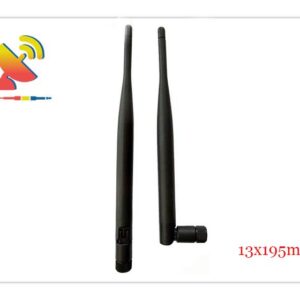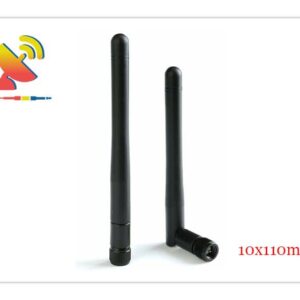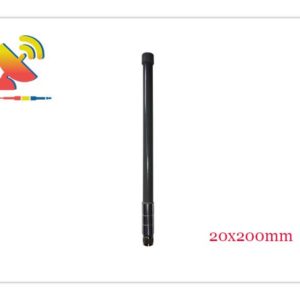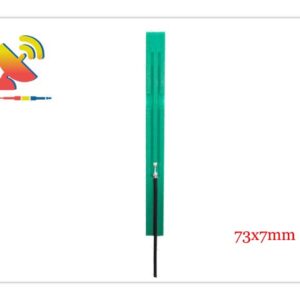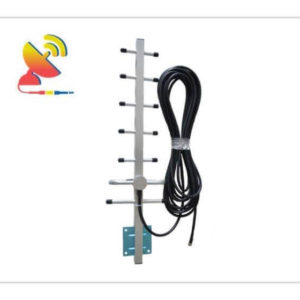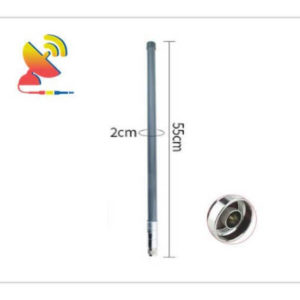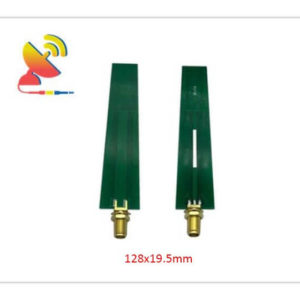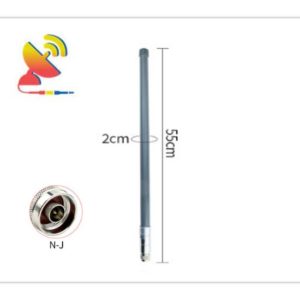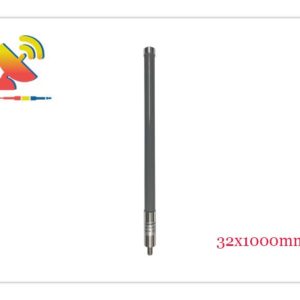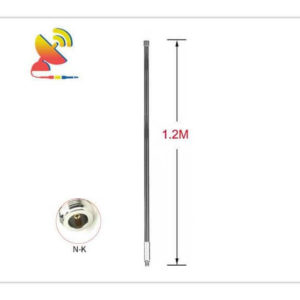Antenna Types
Indoor-outdoor Antennas Manufacturer
C&T RF Antennas Inc is the internal & external antennas manufacturer indoor & outdoor antennas supplier in China.
In radio systems, many different antenna types are used with specialized properties for particular applications. Antennas can be classified in various ways.
Types of Antennas
Classification of antennas
① According to the nature of the work classification
Can be divided into a transmitting antenna, receiving antenna, and a transmitting and receiving common antenna.
② Classification according to the use
Can be divided into a communication antenna, broadcast antenna, TV antenna, radar antenna, navigation antenna, directional antenna, etc.
③ According to the antenna characteristics classification
From the direction:
Can be divided into a strong directional antenna, weak directional antenna, directional antenna, omni-directional antenna, needle beam antenna, sector beam antenna, etc.
From the polarization characteristics:
Can be divided into a line polarization antenna, circular polarization antenna, and elliptical polarization antenna. Line polarization antenna is divided into vertical polarization and horizontal polarization antenna.
From the frequency band characteristics:
Can be divided into a narrowband antenna, wideband antenna, an ultra-wideband antenna.
④ Category according to the current distribution on the antenna
There are traveling wave antenna and standing wave antenna.
⑤ According to the use of wave classification
There are long wave, ultra-long wave antenna, medium wave antenna, short wave antenna, ultra-short wave antenna, microwave antenna and millimeter wave antenna.
⑥ According to the carrier
There are vehicle antenna, airborne antenna, star antenna, bullet antenna, etc.
⑦ According to the antenna shape classification
There are whip antenna, T-shaped antenna, V-shaped antenna, rhombus antenna, ring antenna, spiral antenna, waveguide mouth antenna, waveguide slit antenna, horn antenna, reflective surface antenna, etc.
In addition, there are yagi antenna, logarithmic period antenna, array antenna, array antenna, and linear array antenna, plane array antenna, attached to the surface of some carriers, such as conformal array antenna.
What are common antenna types in wireless communication?
The basics and types of antennas include a horn antenna, parabolic antenna, a helical antenna, slot antenna, dielectric antenna, patch antenna, phased array antenna, a dipole antenna, Omnidirectional antenna, directional antenna, folded dipole antenna, ground plane antenna, YAGI antenna, Log periodic antenna, etc.
Different Types of Antennas
The antenna is the RF signal from the transmission line radiation to the air or received from the air to the transmission line of a device, can also be regarded as a kind of impedance converter or an energy converter, it propagates the transmission line of the guided wave, transformed into the electromagnetic wave propagated in the unbounded medium, or the opposite transformation.
For the design of wireless transceiver equipment applied in the RF system, the design and selection of the antenna is an important part of it, a good antenna system can make the communication distance to the best state, and the same type of antenna size is proportional to the wavelength of the RF signal, the lower the frequency of the signal, the larger the required antenna.
The antenna by the installation position can be divided into the external antenna and internal antenna, installed in the device inside called the internal antenna, and installed in the device outside called the external antenna.
For handheld devices, wearable designs, smart homes, and other small-size products, generally use a built-in antenna, their integration is high, and the product appearance is beautiful.
Internet of things and smart hardware products need to be networked to transmit data, so they all need to use antennas.
The smaller the space, the more frequency bands, and the more complex the antenna design, external antennas are generally standard products, purchasing the required frequency band antenna can be used, no need to debug, plug and play. For example, courier cabinets, and vending machines, commonly use a magnetic external antenna, sucked on the tin shell can.
1. External antenna
An external antenna can be divided into the omnidirectional antenna and directional antenna from the different directions of radiation field radiation angle.
Omni-directional antenna
Omni-directional antenna, that is, in the horizontal direction map for 360 ° are uniform radiation, which is usually said to be directionless, in the vertical direction map for a certain width of the beam, in general, the smaller the width of the flap, the greater the gain.
Directional antenna
A directional antenna is in a particular direction or a particular direction to transmit and receive electromagnetic waves is particularly strong, and in other directions to transmit and receive electromagnetic waves is zero or very small a kind of antenna.
The purpose of using a directional transmitting antenna is to increase the effective utilization of radiated power and increase confidentiality; the main purpose of using a directional receiving antenna is to enhance the signal strength to increase the anti-interference ability.
External directional antenna mainly includes a flat panel antenna, sector antenna, yagi antenna, and log periodic antenna.
2. Built-in Antenna
Built-in antenna mainly refers to the antenna that can be placed inside the device, built-in antenna mainly includes an FPC antenna, PCB antenna, spring antenna, ceramic patch antenna, laser direct forming technology (LDS), and hardware shrapnel antenna.
The selection guide, how to choose the right antenna for your device?
In choosing the right antenna for the equipment, first of all, according to the product structure determine the choice of built-in or external antenna, an external antenna that the antenna is installed outside the equipment.
The advantages of external antenna
High gain.
Less affected by the environment can be used as a standard product, saving the development cycle.
Occupy space, affect the product’s beauty.
Advantages of the built-in antenna
Relatively high gain.
Mature process, good product delivery consistency.
Built-in in the device, beautiful, no need to do three separate protection.
Affected by the surrounding environment, generally need to combine with the product itself to customize.
1. How to choose an external antenna?
First, need to determine the equipment signal coverage area, the signal coverage direction is determined by the radiation direction of the antenna, according to the antenna radiation direction, the antenna is divided into the omnidirectional antenna and directional antenna.
(1) Outdoor Omnidirectional Antenna
Omni-directional antenna, that is, in the horizontal direction of the map performance of 360 ° is uniform radiation, which is usually said to be directionless.
Magnetic Mount Antenna
The gain is relatively high, and the biggest characteristic is a strong magnetic base, installation and fixing are very convenient, but the magnetic base mount must be adsorbed on the metal surface, in the wireless module industry, a magnetic mount antenna is often used with the wireless module, so as to increase the communication distance of wireless modules, such as intelligent meter reading, vending machine, express cabinet, car radio, etc.
Copper rod magnetic mount whip antenna
Similar to the common whip sucker antenna, the advantage over the whip sucker is that it uses a pure copper radiator with a larger diameter, which has a small ohmic loss, high antenna efficiency, and wide bandwidth coverage. It is suitable for digital transmission radio with relatively high-performance requirements, medium-distance map transmission, etc.
Rubber Duck Antenna
The most common external antenna, its gain is moderate, relatively low price, commonly used in wireless communication modules, wireless routing, digital transmission radio, etc. You can choose the right size antenna according to the installation space requirements, choose the antenna size and gain has a relationship, usually, the longer the length of the same frequency band the higher the gain.
Fiberglass Antenna
Among omni-directional antennas, the glass fiber/FRP antenna has the best performance, its inner core is a pure copper oscillator, using the balanced feed, with little influence from the environment; the shell is made of high-quality glass fiber, with good triple-proof characteristics and good adaptation to the harsh natural environment.
Especially suitable for ultra-long-distance gateway signal coverage, image transmission, etc.
(2) External Directional Antenna
Generally used for communication distance, signal coverage range is small, target density environment, extreme example for point-to-point long-distance communication.
Flat Panel Antenna
High efficiency, small size, and ease of installation can take into account the gain and radiation area. Suitable for indoor, tunnel wireless signal coverage; medium distance signal transmission, map transmission and signal through the wall, etc.
Sector Antenna
A sector antenna is a directional microwave antenna with a sector-shaped radiation pattern. Typical designs are 60°, 90°, and 120°, often with a few extra degrees. The largest use of these antennas is as antennas for cellular base station sites. They are also used for other types of mobile communications, for example in WiFi networks. They are used for limited distances of about 4 to 5 km.
Yagi Antenna
Very high gain, slightly large size, strong directional, need to pay attention to the direction of the antenna when using, can be used for ultra-long distance signal transmission, map transmission and direction finding, etc.
Logarithmic Period Antenna
Ultra-broadband antenna, very wide bandwidth coverage, bandwidth up to 10:1, commonly used for signal amplification, indoor distribution, and elevator signal coverage.
2 . How to choose a built-in antenna?
The form of built-in antenna can be divided into
FPC/PCB/spring/ceramic/hardware shrapnel/Laser Direct Structuring (LDS) and other types.
At present, the general choice is more FPC and PCB antenna; in the case of high-cost control and general performance requirements, choose spring & hardware shrapnel more; special application scenarios will choose ceramic patch or LDS antenna, the general built-in antenna are affected by the environment, need a custom design or impedance matching.
FPC Antenna (Flexible Printed Circuit Board)
With good cost performance, after spraying oil can match with various appearance colors; the product is flexible and can fit perfectly on a regular circular surface; the process is mature and stable, the production cycle is fast and the batch deliverability is good; it is suitable for the antenna design of broadband smart devices with high-performance requirements.
PCB Antenna (Printed Circuit Board)
The biggest difference between a PCB antenna and an FPC antenna is, FPC has good flexibility, and a PCB antenna is a hardboard, in structure installation, if you need to bend and curved a surface then choose an FPC antenna, if it is a plane you can choose a PCB antenna, PCB antenna is easier to install than FPC.
Spring Antenna
Its biggest characteristic is cheap, but the gain is low and the bandwidth is narrow; when inside the product, often needs to debug the antenna matching.
Ceramic Patch Antenna
Occupy very little space, better performance; narrow bandwidth, more difficult to do multi-band; effectively improve the integration of the motherboard, and can reduce the antenna to ID restrictions.
Need to import the design at the beginning of the definition of the motherboard.
LDS Antenna
Suitable for special appearance surface antenna can make full use of antenna space; for antenna performance closer to the physical limits of the environment; for the antenna attached to the shell or bracket has special material requirements; the process is mature, and can be painted to match the color, the process has a certain rate of the defect.
Hardware shrapnel antenna
High-cost performance, effective cost reduction; high strength, not easy to break; mature and stable process, fast production cycle, good batch delivery; the application of antenna area and round appearance surface, has some limitations.
C&T RF Antennas Inc provides a comprehensive range of internal-external antenna types for many industries and applications.
C&T RF Antennas Inc. provides indoor-outdoor antennas with many antenna frequencies such as Cellular, 6G, 5G, 4G, 3G, NB-IoT, GNSS, GPS, Dual-band Wifi, 5.8 GHz, 2.4 GHz, 169MHz, 230MHz, 315MHz, 433MHz, 868MHz, 915MHz LoRa, UWB, RFID, ADS-B, etc.
The indoor-outdoor antenna types from C&T RF Antennas Inc. include Through-hole Mount Antennas, Magnetic Mount Antennas, Rubber Duck Antennas, Fiberglass Antennas, PCB Antennas, FPC Antennas, Spring Antennas with cellular antennas, Wi-Fi antennas, Lora antennas, GNSS antennas, combination antennas.
The internal and external wireless antennas are used for the Wi-Fi And Bluetooth industries, IoT And M2M industries, LoRa And ISM applications, and GPS And GNSS applications.
Contact the C&T RF team for more indoor-outdoor antenna details.
Showing 1–16 of 715 results

